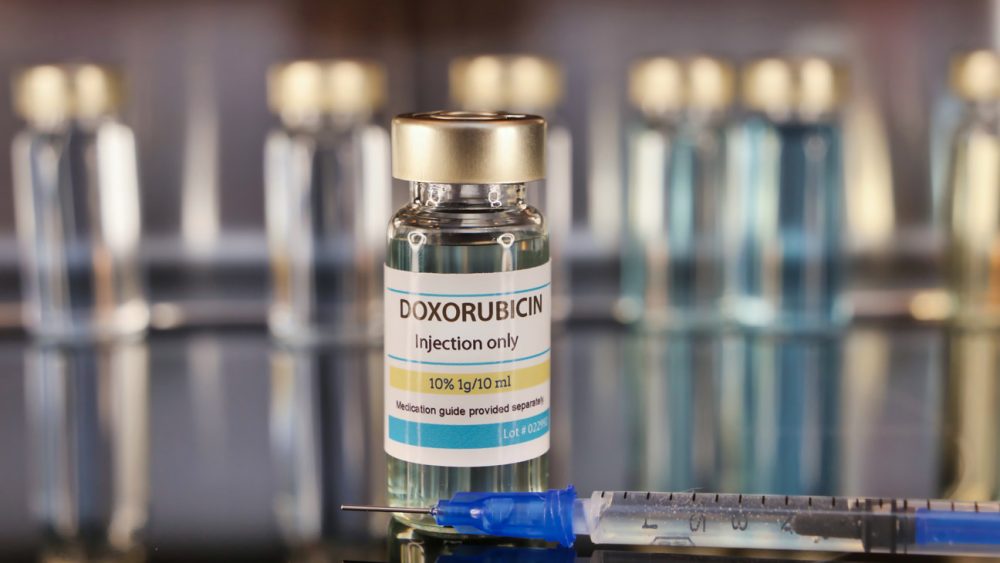Advertisment
A new method to test cancer drug toxicity

For people with cancer, chemotherapy saves lives, but for some patients, the treatment comes with a side effect—heart damage. Screening cancer drugs for cardiotoxicity has been an ongoing challenge as heart cells don’t naturally grow in a dish, requiring researchers to do this critical testing using cardiac tissue from rodent models. A new study from researchers at Cummings School of Veterinary Medicine at Tufts University and Tufts Medical Center reports that heart tissue obtained through organ donations from dogs dying of other causes are a promising platform for testing cancer drug toxicity, offering scientists a new alternative.
The organ donation program at Cummings School of Veterinary Medicine works the same as organ donation programs in people, with owners agreeing to donate the heart from their pet when they die of other causes in order to support research in animal and human health. The work published recently in the journal PLOS ONE.
“Though cancer drugs in the human market can be a powerful tool in treating the disease, what is not often considered are the long-term cardiovascular toxicity effects because it takes years before you realize the heart is not functioning as well,” says senior author Vicky Yang, a cardiologist and associate professor at Cummings School of Veterinary Medicine. “With our cell culture platform, you can very quickly recreate cancer drugs’ secondary effects and manipulate the biological causes to make the treatments less toxic.”
As a proof-of-concept, the research team exposed canine heart slices to doxorubicin, a chemotherapy drug used in humans and dogs to suppress a range of solid tumors but is also known to cause life-threatening heart problems. Yang and colleagues observed that the heart cells were not recovering from the injury caused by the drug, a process called autophagy, validating findings from rodent studies.
Unexpectedly, the canine heart slices stayed alive for over a week, lasting more than twice as long as heart cells taken from rodent models and at less cost. Due to dogs’ genetic similarity to humans, the platform yields quicker, more comprehensive, and more clinically relevant drug screens than standard mouse models. “We still don’t know why our platform works so well, but maybe we aren’t giving heart tissue enough credit,” Yang says. “Maybe heart tissue is more resilient than we think.”
Testing cancer drugs for side effects requires costly, labor-intensive research in rodent models. Dogs have more genes in common with humans and can experience the same cardiac side effects as human patients when on chemotherapy. So, the canine heart slice screens can provide quicker, more comprehensive, clinically relevant data than rodent models.
It took over two years of trial and error before Yang and colleagues finalized their platform. The project was a collaboration between Cummings School and Tufts Medical Center, bringing together human cardiologists and oncologists, as well as veterinary specialists and basic scientists working with rodent models. Their shared goal was to piece together the best way to take cardiotoxicity data from the lab and apply it to human patients.
Yang acknowledges that a limitation to scaling this platform is access to an academic veterinary hospital, such as Henry and Lois Foster Hospital for Small Animals, which has an organ donation program that provides the researchers with heart tissue. Translational cardio-oncology is an emerging field, and the researchers are eager to collaborate with other clinicians to test a wider range of cancer drugs.
Howard H. Chen from the Molecular Cardiology Research Institute at Tufts Medical Center is co-senior author of the paper.
Research reported in this article was supported by the National Institutes of Health under awards K01OD028205-01, K99/R00HL121152, K08HL146959, and 1R01CA243542-01. Complete information on authors, funders, and conflicts of interest is available in the published paper. The content is solely the responsibility of the authors and does not necessarily represent the official views of the funders.





